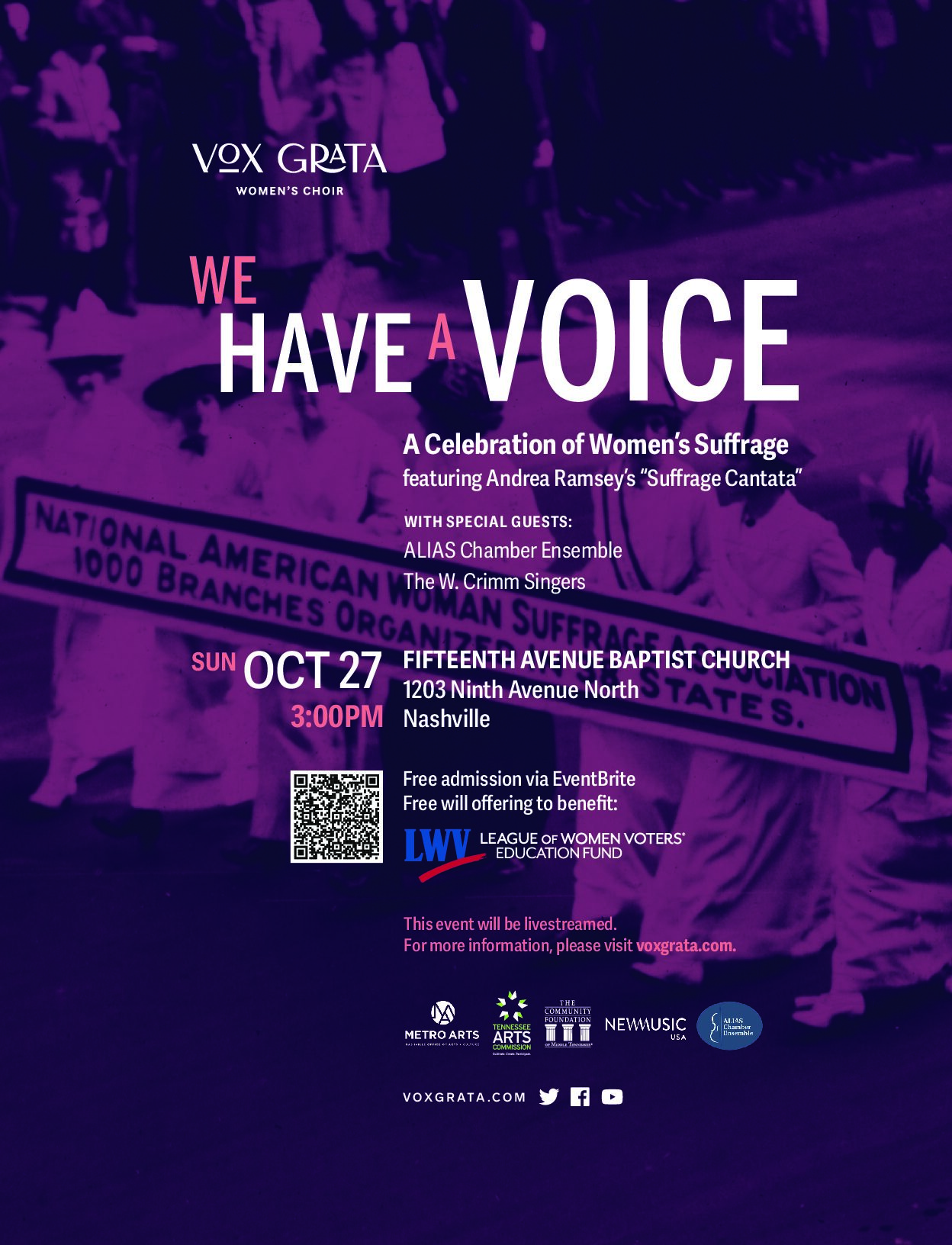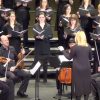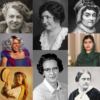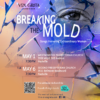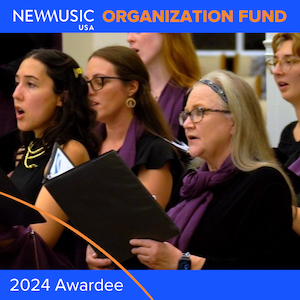Susan B. Anthony (1820-1906)
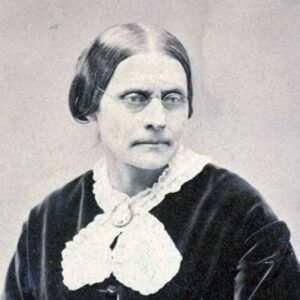
Susan B. Anthony was born in 1820 in Massachusetts. She was raised as a Quaker and her belief in equality inspired and guided her throughout her life’s work.
Anthony fought for the abolition of slavery. In 1856, she served as an American Anti-Slavery Society agent, making speeches, organizing meetings, and distributing pamphlets.
In 1851, Anthony met Elizabeth Cady Stanton, and the two suffragists worked to gain independence and equality for women for the rest of their lives. She traveled around the country advocating for women’s rights and lobbied Congress every year until her death. She died in 1906, fourteen years before many women were given the right to vote with the passage of the 19th Amendment.
While her efforts were important to the suffrage movement, Anthony’s motives were not without flaw. She was sometimes permissive of racist thinking when she and other suffragists felt it would expedite their efforts. Vox Grata’s recent performance of the Suffrage Cantata by composer Andrea Ramsey depicted diverse perspectives of the movement. To read more about this event, visit We Have A Voice: Concert Highlights
Eleanor Roosevelt (1884-1962)
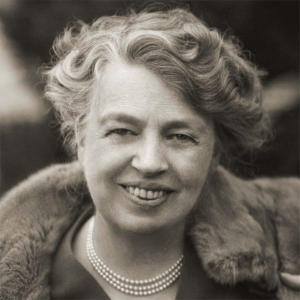
“First Lady of the World” Eleanor Roosevelt, wife of President Franklin Delano Roosevelt used her platform as First Lady of the United States and as a member of the wealthy and prominent Roosevelt family to advocate for human and civil rights. She was a prolific author, speaker, and humanitarian, and chaired the United Nations’ Human Rights Commission.
During World War I, she volunteered with various relief agencies. Initially wary of women’s suffrage, Roosevelt eventually played a leadership role in the League of Women Voters. She was head of the Women’s Division of the Democratic National Committee. She had immense influence on her husband’s decisions as president and in shaping both his cabinet and the New Deal, ensuring that groups left out of the New Deal were included by seeking revisions to programs and legislation. She also championed racial justice in several ways. Even after her husband’s death, her political activism did not end. She is remembered as one of the most prominent humanitarians of her generation.
Katherine Johnson (1918-2020)
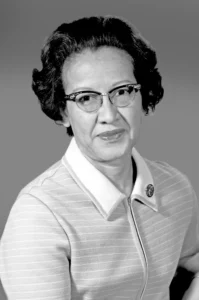
“Get the girl.” On February 20, 1962, John Glenn was the first American to launch into space and orbit the Earth. Friendship 7’s success depended heavily on the exactitude of the rocket trajectory’s calculations. A few days prior to the mission, Glenn trusted his life with only one person to confirm by hand these IBM-generated numbers: Katherine Johnson, 44 year-old mathematician, the first woman – and African-American woman – to join NASA’s Space Flight Research Division in Langley’s Memorial Aeronautical Laboratory as research mathematician, and who was part of the Space Task Group for America’s first multiple missions to space. A human computer. “The girl with the numbers.”
Born in 1918, West Virginia, Katherine Johnson lived in a time and place where social norms were being questioned for both women and Black people. Having been denied an education higher than grade 6 himself, Johnson’s father armed her with many tools. One that would propel her beyond many challenges was the following lesson: “You are no better than anybody, but nobody’s better than you.” Johnson was able to gather the courage and ask many questions that some may not have dared to ask both as a woman and an African-American. One of her favorite questions was “Why not?” Why couldn’t she integrate the all-white West Virginia University when the Jim Crow segregation law’s justification, “separate but equal,” could no longer stand? Why couldn’t she do creative and theoretical thinking as a woman instead of being assigned the role of a “human computer,” which was the role a female mathematician could hold at NASA (hence the nickname “computers in skirts”)? Why couldn’t she, as a Black woman, participate at all-male meetings pertaining to her research? Contribute to one of the first American manuals about space technology? Pen multiple research papers? At every turn, Johnson girded herself with her strengthening lesson that she would then impart with her students at every opportunity: “I am no better than anyone, but no one is better than me.”
“I loved numbers and numbers loved me. They followed me everywhere. No matter what I did, I was always finding something to count […]”. In the end, Johnson got to live her dream as a research mathematician.
Miss Major Griffin-Gracy (b. 1946)
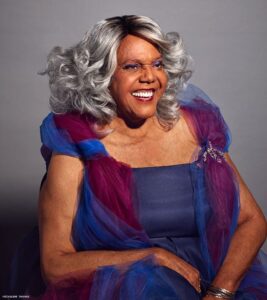
We look to the intersections between those in the margins for humanity’s nerve endings—our vastest source for empathy and nuanced outrage. There we find Miss Major Griffin-Gracy, holding the door open for “the forgotten ones, the discarded, and misunderstood,” asking us all to stay “strong and delicate.” A former grass roots organizer and lifelong transgender and intersex rights activist from coast to coast, Miss Major is a “veteran” of the Stonewall Riots. Hearing her speak today, you would not perceive within her voice the years of surviving our historically transphobic, racist, and often violent systems of oppression. And her fight to liberate her trans and queer descendants continues. At age 78, she has opened the House of GG, the Griffin-Gracy Educational Retreat and Historical Center for the transgender and gender non-conforming community, in Little Rock, Arkansas. For more information, please visit www.HouseOfGG.org. “When the Dust Settles” is a culmination of trans stories brought to life through singing written in homage to Miss Major. Amir Rabiyah’s words synthesize themes of intersectional identity, survival, and humanity, striving to share a bit of Miss Major’s perspective. They note, “Phrases such as ‘when the dust settles,’ and ‘we are still here,’ are direct quotes, while other statements and themes are paraphrased.” Their words furthermore point toward a trans woman’s right to life and to pleasure.
Abigail Adams (1744–1818)
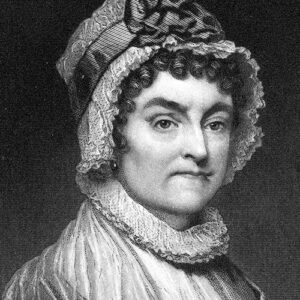
Hailed for her now-famous admonition that the Founding Fathers “remember the ladies” in their new laws, Abigail Adams was not only an early advocate for women’s rights, but she was also a vital confidant and advisor to her husband John Adams, the nation’s second president. She opposed slavery and supported women’s education.
From their earliest married days, the couple began an extensive correspondence, which provides insight into the social and political climate of the Revolutionary and Early National periods in American history. In 1776, as her husband participated in the First Continental Congress in Philadelphia, Adams wrote her most famous letter that the Founding Fathers “remember the ladies.” She added, “Do not put such unlimited power into the hands of the husbands. Remember all men would be tyrants if they could.”
Miriam the Prophetess

First appearing in the book of Exodus, Miriam was the sister of Moses and Aaron, and a prophetess among the Israelites. After fleeing generations of oppression and slavery in Egypt, the Israelites crossed through the Red Sea to safety. It was then Miriam experienced freedom for the first time in her life. Music was integral to this defining moment as she boldly led her people in song.
Composer Elaine Hagenberg portrays the journey of Miriam, a young woman who finds bravery amid uncertainty and fear. She employs harmonies that paint an expansive desert landscape, while the voices search for faith and risk taking the first step, ultimately conquering fear to find the “song in my heart.”
Malala Yousafzai (b. 1997)
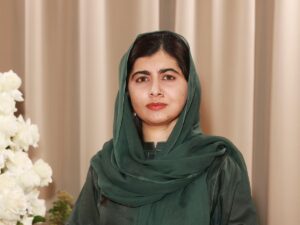
Malala Yousafzai was already known as an advocate for girls’ education in her native Pakistan when she survived three gunshot wounds to the head at the hands of the Taliban in 2012. After the attack, young people around the world stood up in solidarity saying, “I am Malala.” Since her miraculous recovery, she has become a global advocate for children’s education and the youngest person ever to receive a Nobel Peace Prize.
She is quoted as saying: “They thought that the bullets would silence us. But they failed. And then, out of that silence came thousands of voices. Weakness, fear, and hopelessness died. Strength, power, and courage were born.”
Hellen Keller (1880-1968)
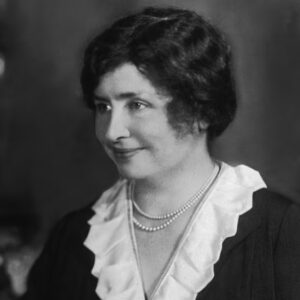
Undeterred by deafness and blindness, Helen Keller rose to become a major 20th century humanitarian, educator and writer. She advocated for the blind and for women’s suffrage and co-founded the American Civil Liberties Union.
Recognizing her daughter’s intelligence, Keller’s mother sought help from experts including inventor Alexander Graham Bell, who had become involved with deaf children. Ultimately, she was referred to Anne Sullivan, a graduate of the Perkins School for the Blind, who became Keller’s lifelong teacher and mentor. She used touch to teach Keller the alphabet and to make words by spelling them with her finger on Keller’s palm. A year later, Sullivan brought Keller to the Perkins School in Boston, where she learned to read Braille and write with a specially made typewriter. Newspapers chronicled her progress. At fourteen, she went to New York for two years where she improved her speaking ability and then returned to Massachusetts to attend the Cambridge School for Young Ladies. With Sullivan’s tutoring, Keller was admitted to Radcliffe College, graduating cum laude in 1904. Sullivan went with her, helping Keller with her studies.
As an adult, Keller’s political awareness heightened. She supported the suffrage movement, embraced socialism, advocated for the blind and became a pacifist during World War I. She was honored with the Presidential Medal of Freedom in 1964.
Sources
- www.womenshistory.org
- https://mchistory.org/research/biographies/anthony-susan-b
- https://www.womenshistory.org/education-resources/biographies/eleanor-roosevelt
- https://www.nasa.gov/centers-and-facilities/langley/katherine-johnson-biography/
- www.musicspoke.com
- www.marivalverde.com
- https://www.biography.com/history-culture/abigail-adams
- https://www.jw.org/en/bible-teachings/faith-in-god/men-women-bible/miriam-prophetess-song/
- https://www.biography.com/activists/malala-yousafzai
- www.elainehagenberg.com
- www.joanszymko.com
- https://www.biography.com/activists/helen-keller
